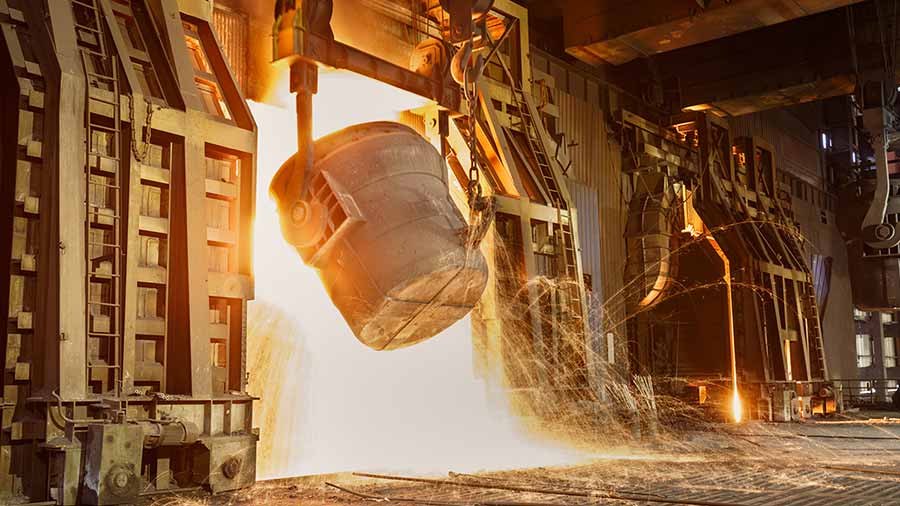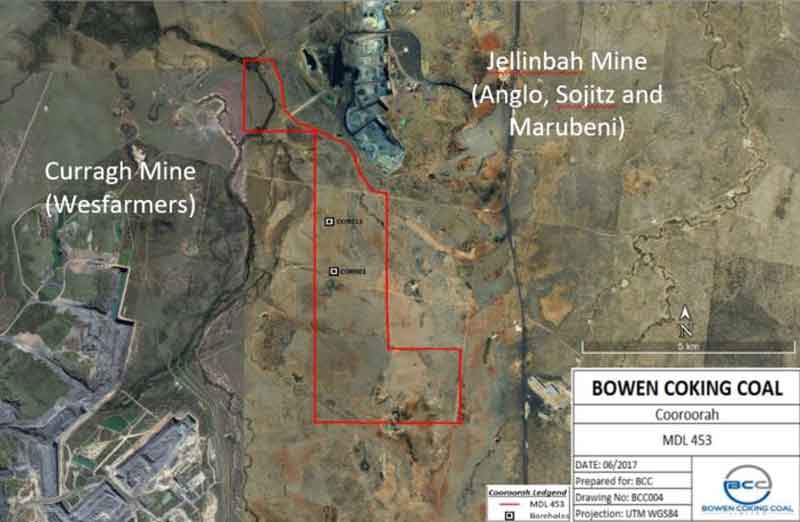Bowen Coking Coal’s Cooroorah project yields high quality coal

Bowen Coking Coal is one of the ASX's only coking coal pure-plays. Pic Getty
Special Report: Early results indicate Bowen Coking Coal’s Cooroorah project contains a high quality metallurgical coal similar to other mines in Queensland’s Bowen Basin.
Even before a washability analysis was undertaken, the key characteristics of a low-volatile pulverised coal injection (PCI) type of coal were observed at the Mammoth coal seam.
PCI is commonly used in blast furnaces as a replacement for coke in the steelmaking industry, and trades at a premium to semi-soft coking coal.
A coal seam intersected in one hole demonstrated a low-ash, low-volatile and high-carbon content, comparable to the high quality metallurgical coal mined in the area.
Washability tests confirmed the Mammoth seam could potentially yield a coking coal product with a high crucible swell number (CSN) and low densities.
The washability characteristics of coal are determined by the physical breakage required to separate material of different densities. Low density material is clean coal.
The CSN (ranging between one and nine) is regarded as one of the key characteristics to demonstrate the coking ability of coal and is commonly used as a first test for coking ability.
- Bookmark this link for small cap breaking news
- Discuss small cap news in our Facebook group
- Follow us on Facebook or Twitter
- Subscribe to our daily newsletter
Semi-soft coking coal can rate as low as two with premium hard coking coal as high as nine.
Raw (unwashed) CSN for the Mammoth seam was measured at 2.5.
Previous washability tests on other seams in the tenement as well as historic exploration in the region suggested the presence of higher CSN numbers in the lower density fractions from the Aries, Castor, Pollux and Pisces seams.
The washability tests of the Mammoth seam replicated this trend, although CSN numbers are marginally lower for the Mammoth seam, especially on the larger size fractions.
The ash content of coal is defined as the non-combustible residue left after the coal is burnt, containing mainly mineral matter and impurities. High quality metallurgical coal is typically sold with an ash content of below 10 per cent.

Analysis has determined that the Mammoth seam has very low levels of ash at the full range of density levels. The coal meets low ash requirements without any washing.
Xenith Consulting and M Resources are currently analysing historic exploration data as well as exploration data received from the previous owners.
On completion of the analysis, along with the outcome of the recent exploration program, Bowen will likely be in a position to identify a potential coal type or product mix that will be used in future scoping studies.
Cooroorah hosts a resource of 125 million tonnes, of which 70 million tonnes is in the higher confidence “indicated” category and 55 million tonnes is in the “inferred” category.
It is located between Wesfarmers’ Curragh mine and the Anglo, Marubeni and Sojitz owned Jellinbah mine in the Bowen Basin.
The Bowen Basin, a 60,000 sq km area in central Queensland, hosts Australia’s biggest coal reserves and virtually all of the known mineable prime coking coal, according to the Bowen Basin Underground Geotechnical Society.
Bowen recently struck a deal that will give it access to a larger package of coal-prospective land in Queensland’s Bowen Basin and could see Rio Tinto Exploration come on board as a JV partner.
This special report is brought to you by Bowen Coking Coal.
This advice has been prepared without taking into account your objectives, financial situation or needs. You should, therefore, consider the appropriateness of the advice, in light of your own objectives, financial situation or needs, before acting on the advice.
If this advice relates to the acquisition, or possible acquisition, of a particular financial product, the recipient should obtain a Product Disclosure Statement (PDS) relating to the product and consider the PDS before making any decision about whether to acquire the product.
UNLOCK INSIGHTS
Discover the untold stories of emerging ASX stocks.
Daily news and expert analysis, it's free to subscribe.
By proceeding, you confirm you understand that we handle personal information in accordance with our Privacy Policy.








